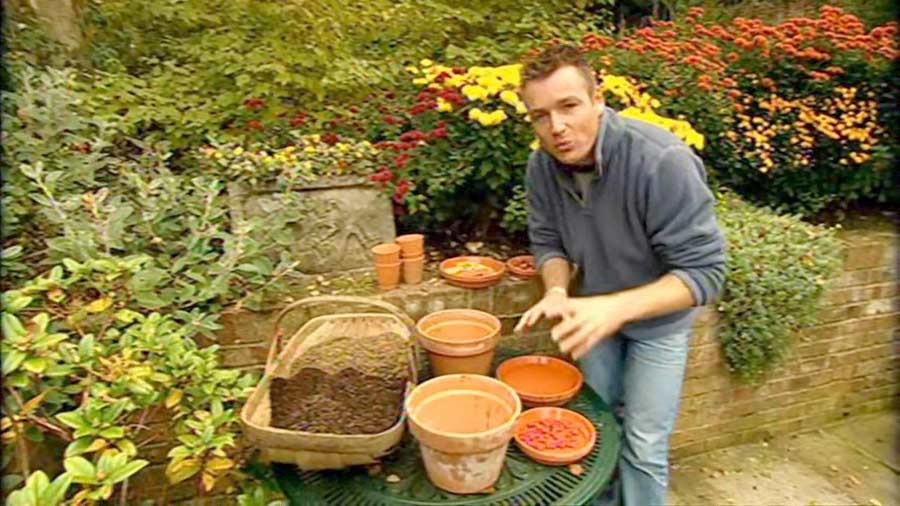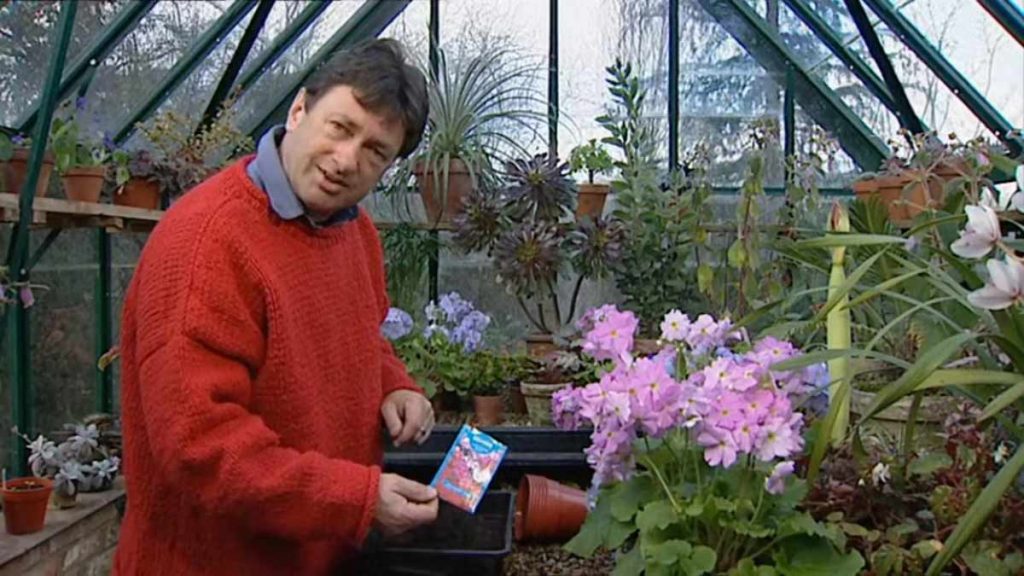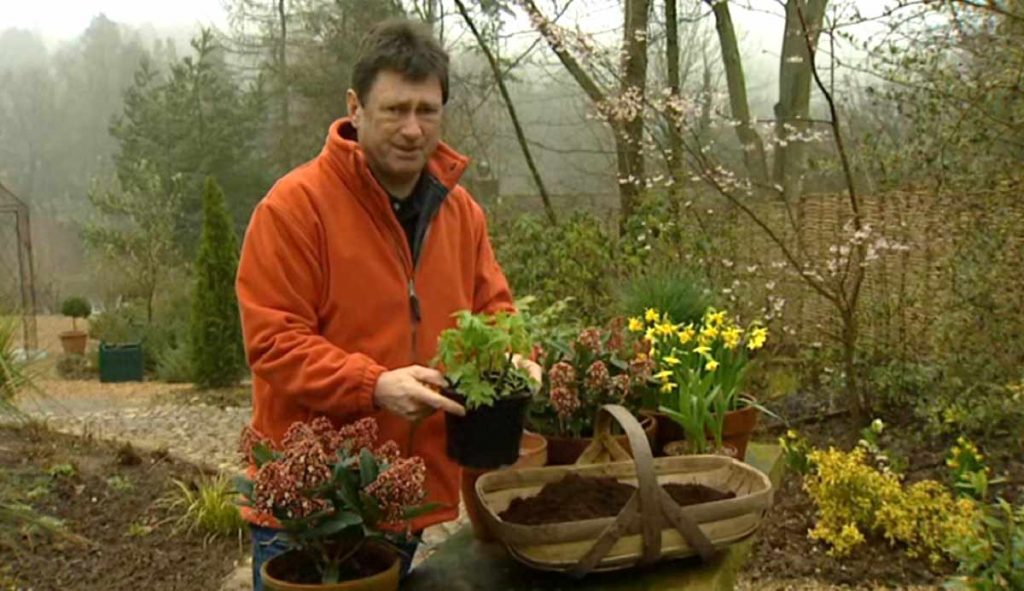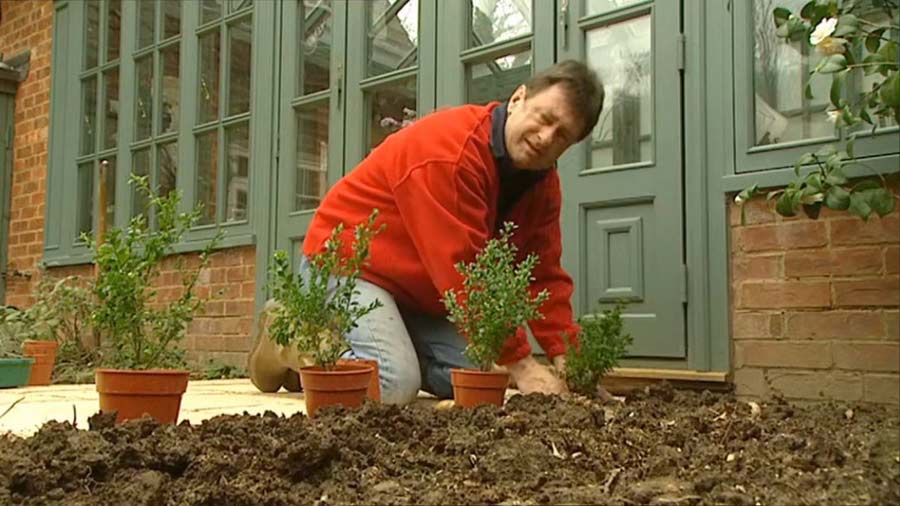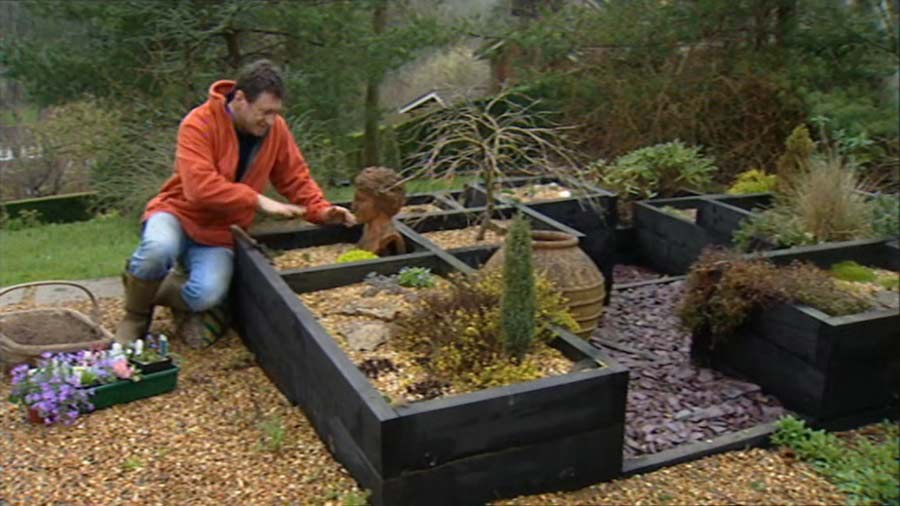Gardeners World episode 26 2002: Gardeners World team and Alan Titchmarsh present seasonal highlights from across the country, visit stunning gardens, meet the gardeners and find out their secrets of success.
Gardening show packed with good ideas, tips, advice from experts and timely reminders to get the most out of your garden, whatever its size or type.
Gardeners World episode 26 2002
Tulips
Tulips are amongst the most popular of bulbs, valued for their brilliant flower colours and shapes. Plant in autumn for a show of spring flowers. Choose from a large range to suit the situation. Whether used in formal or informal beds and borders, tulips make ideal bedding plants combined with annual or biennial planting. Tulips can also be useful for containers, and some varieties can be naturalised in grass.
Tulips grow best in fertile, well-drained soil in full sun, sheltered from strong winds. All dislike excessively wet conditions; this is particularly true with alpine species which require excellent drainage. Exceptions include Tulipa sprengeri, T. sylvestris and T. tarda which prefer a more moisture-retentive soil with partial shade.
Incorporate organic matter into the soil before planting to improve both clay and sandy soils, making them much more suitable for tulips. Coarse gravel can also help improve growing in clay soils. Apply Growmore or chicken manure pellets (70g per sq m or 2oz per sq yd) before planting to help nutrient-poor soils. A neutral to alkaline soil is preferred. Soils with a pH lower than 6.5 may need applications of lime.
Crocus
Flowering mainly in late winter to early spring, many crocuses are good in borders or seasonal containers while others are best in a rock garden or alpine house. Robust types provide drifts of colour in lawns and underneath deciduous trees.
Goblet-shaped flowers, in white, yellow, lilac or purple, appear among grassy leaves in late winter to mid-spring, sometimes opening to reveal central blotches. Petals are sometimes boldly striped outside. Early crocuses need soil that drains easily and flower best in full sun. They can thrive around deciduous shrubs and trees whose branches are bare when the bulbs are flowering.
Seed – sowing outdoors
Many vegetables, annuals, biennials and herbaceous plants can be grown from seed sown outdoors. The secret to success is to prepare a good seedbed, free of weeds and with a crumble-like soil-surface texture.
Many vegetables, annuals, biennials and herbaceous plants can be grown from seed outdoors. Ornamental examples include Centaurea cyanus (cornflower), Digitalis (foxglove), Eschscholzia (Californian poppies), Helianthus annuus (sunflower), Iberis umbellata (candytuft), Limnanthes douglasii (poached egg flower) and Tropaeolum majus (nasturtiums). Vegetables such as beans, carrots, onions and peas can also be grown outside from seed.
Sowing seed outdoors, directly into final growing places, is ideal for gardeners who do not have much room to raise seed indoors in trays or propagators. You also don’t need to start seed sowing as early in spring as when you sow outdoors. You can scatter seed of ornamentals in free drifts to achieve a natural-looking distribution, or sow vegetables and cutting flowers in clearly defined drills to make weeding and thinning easier to carry out.
